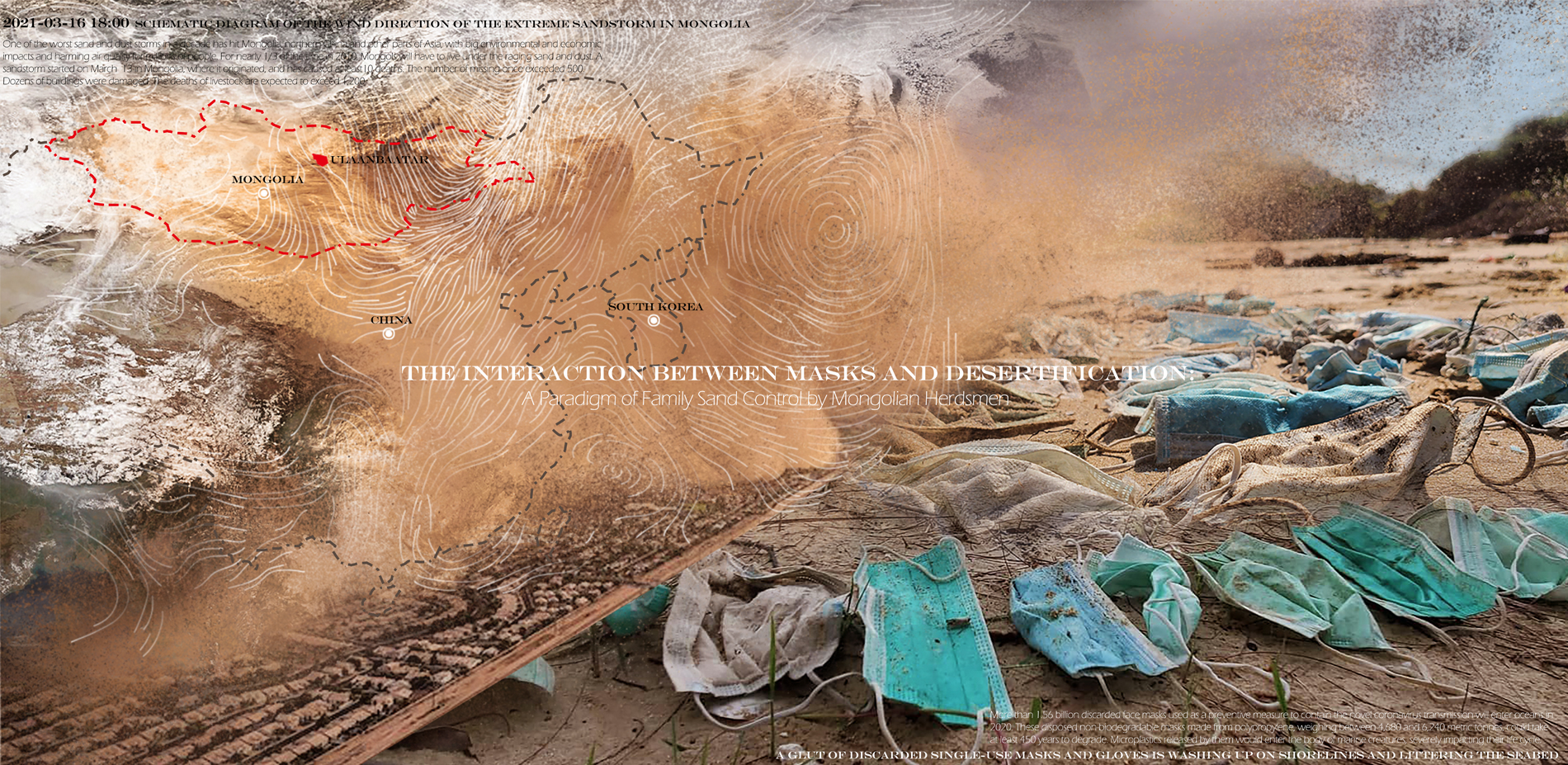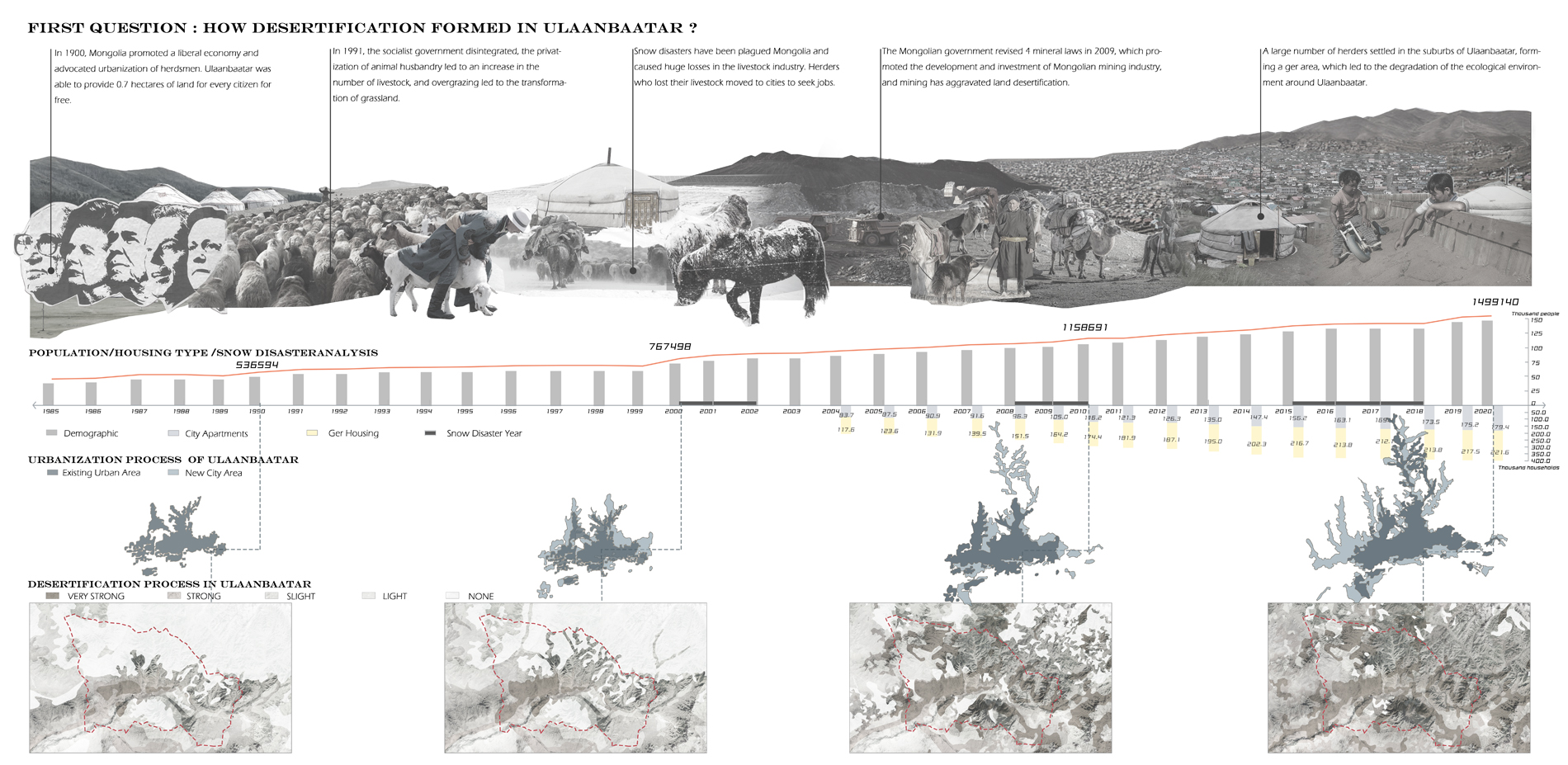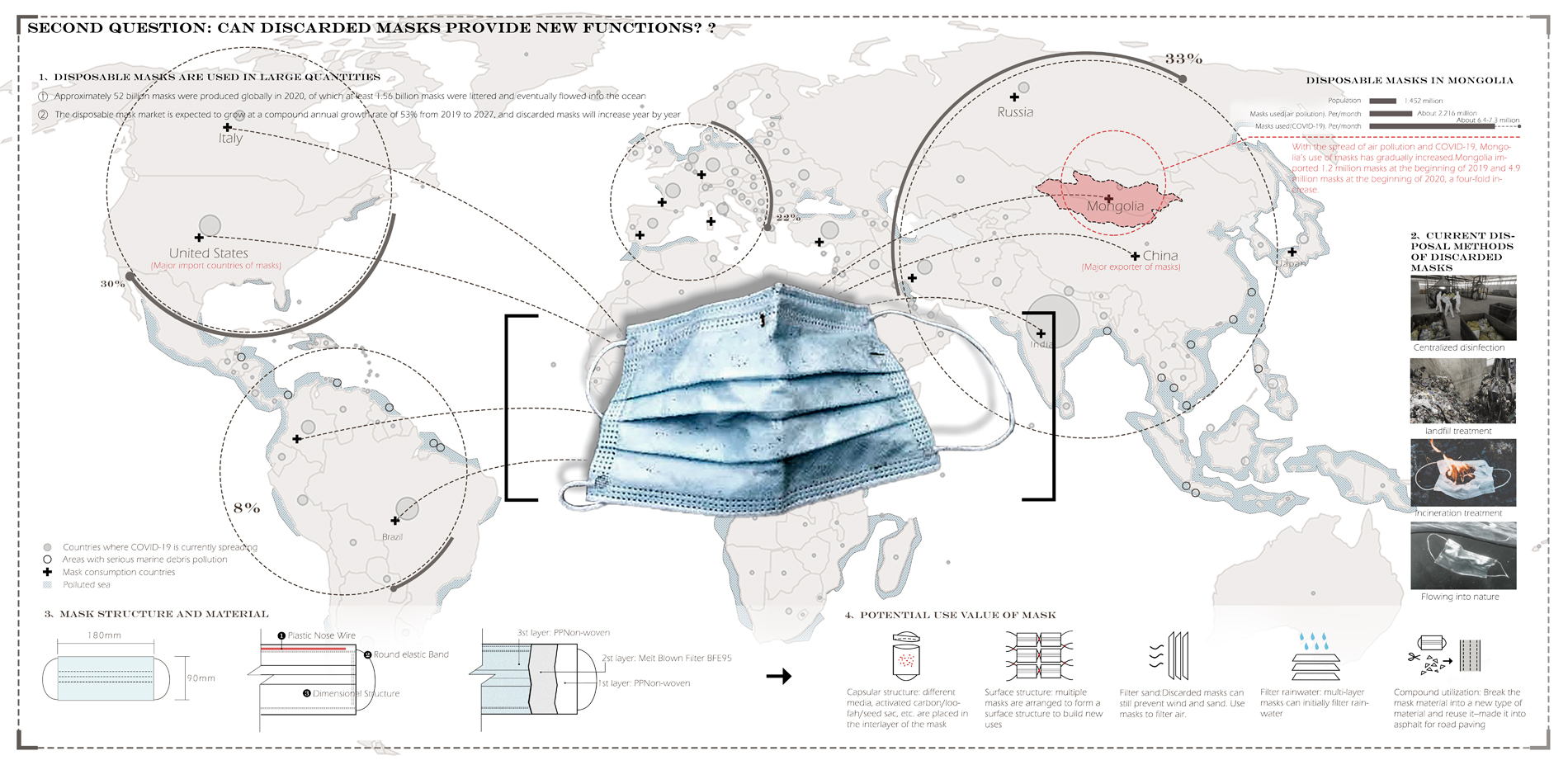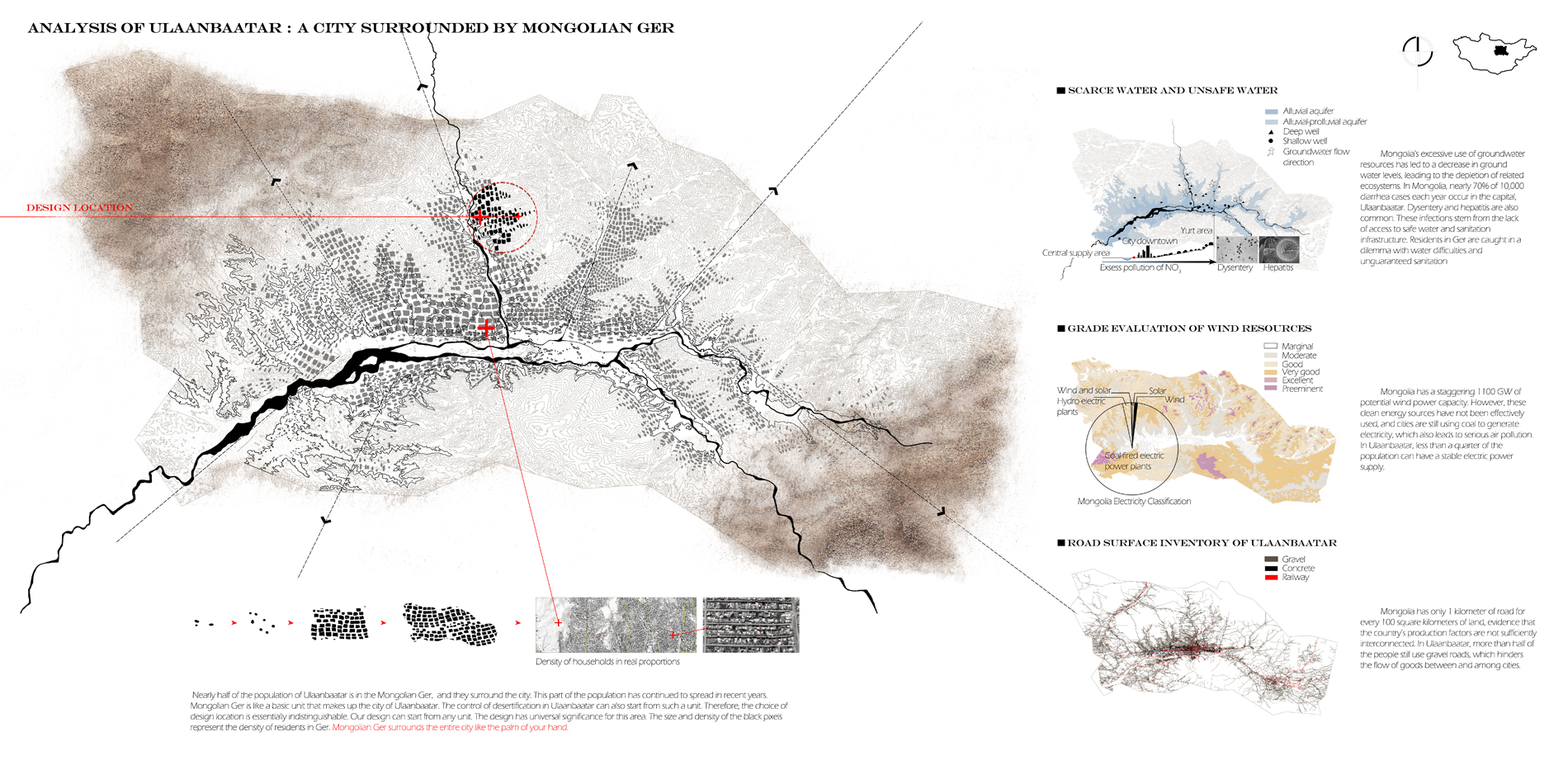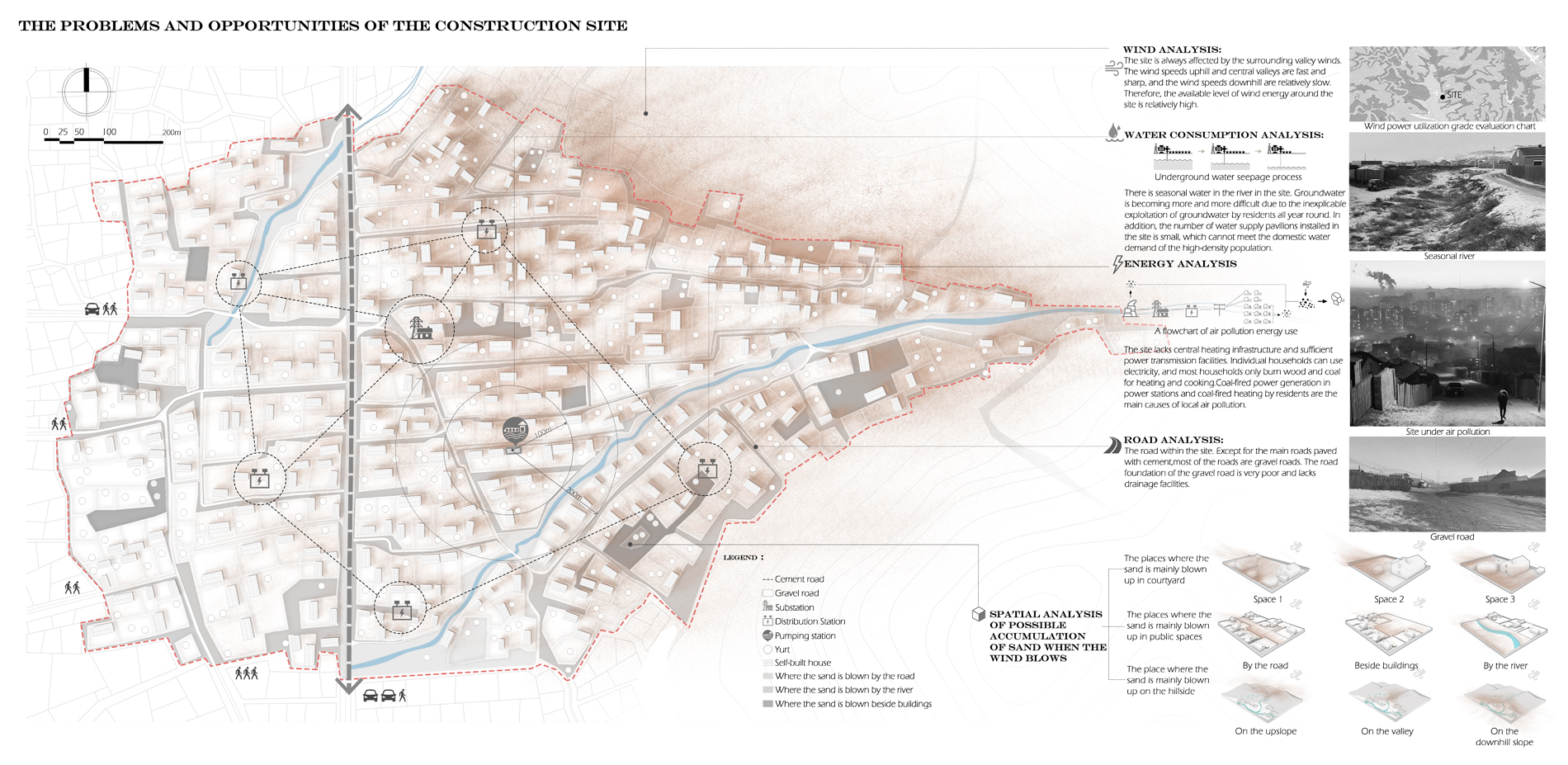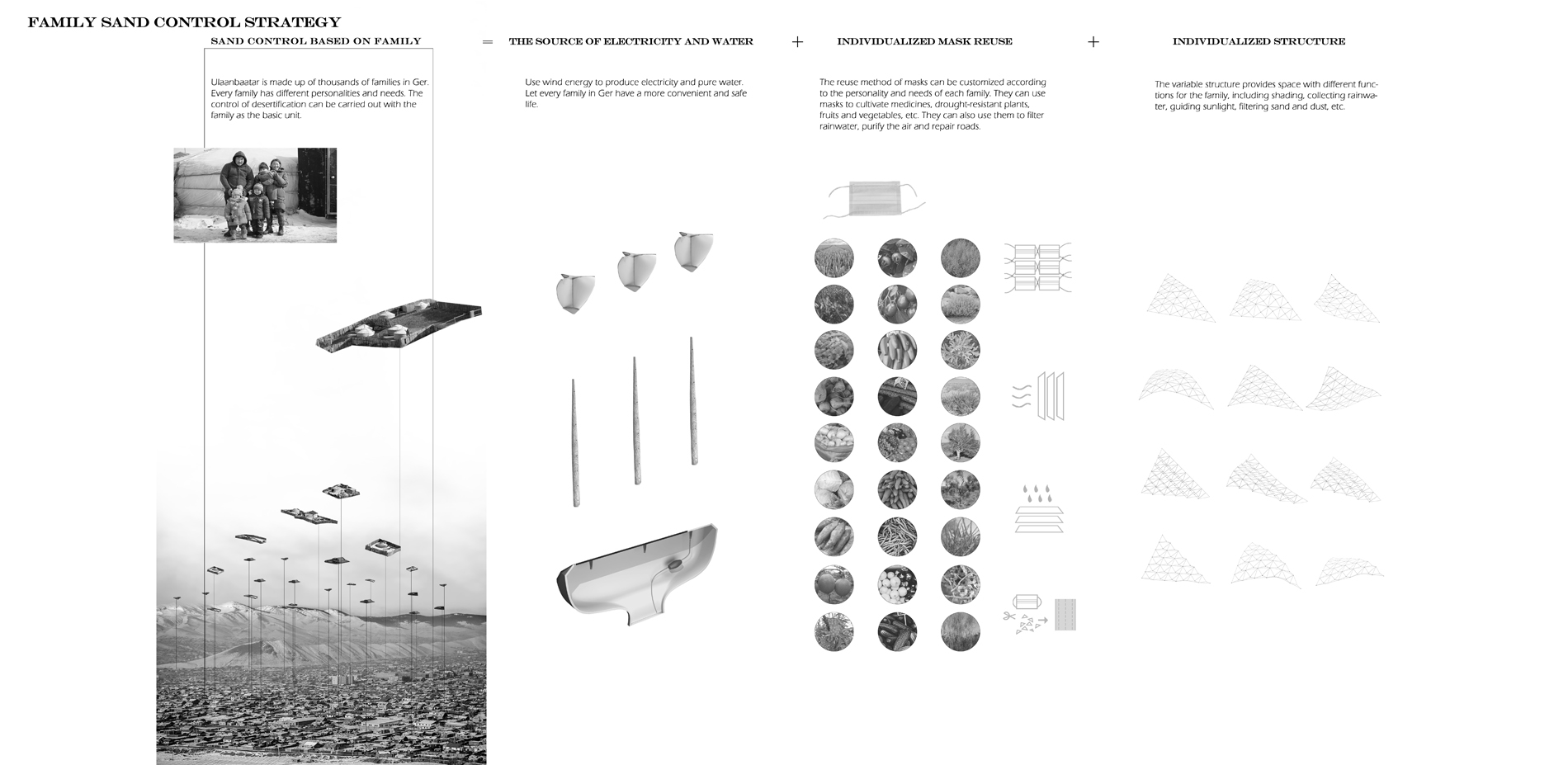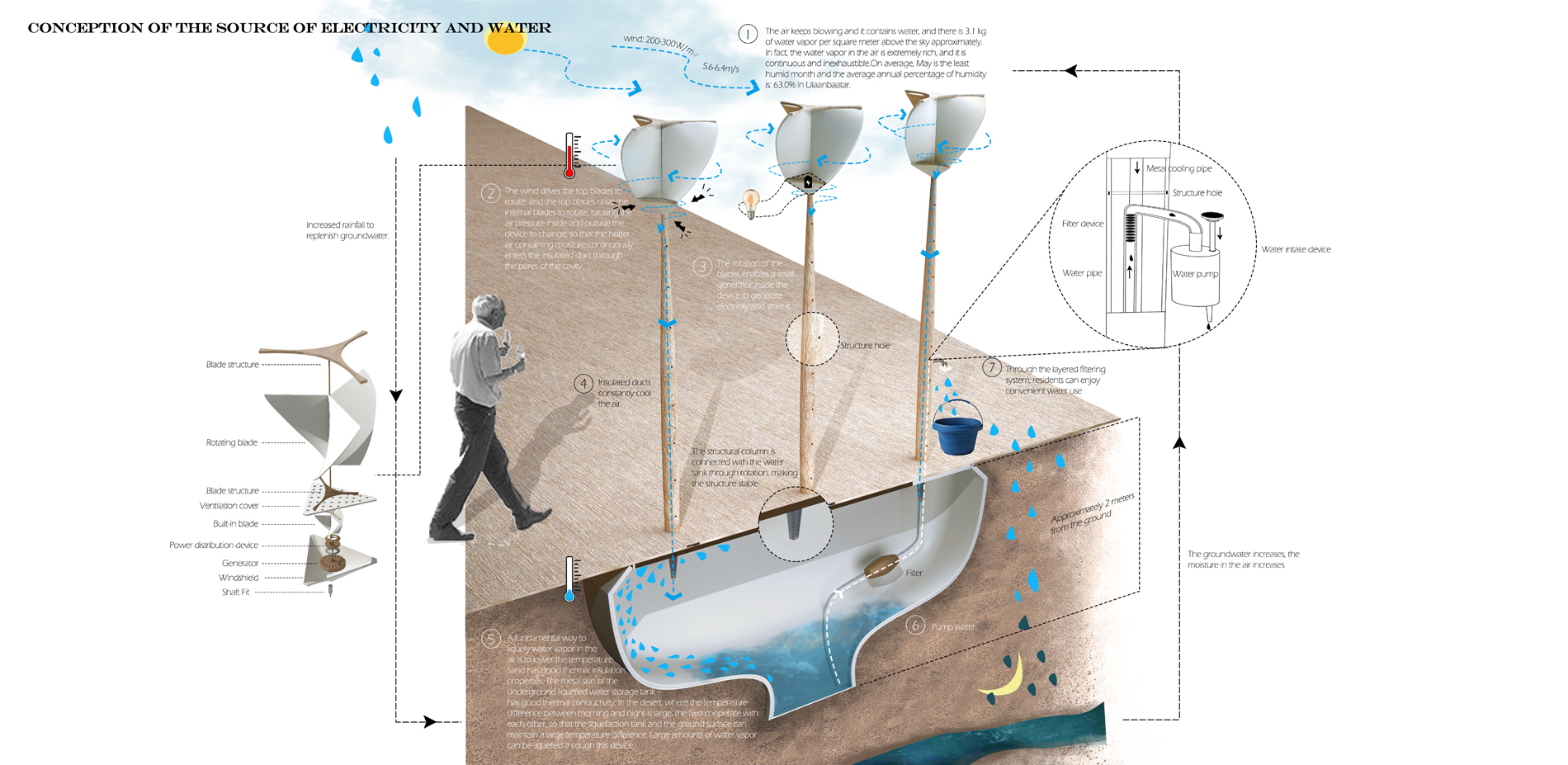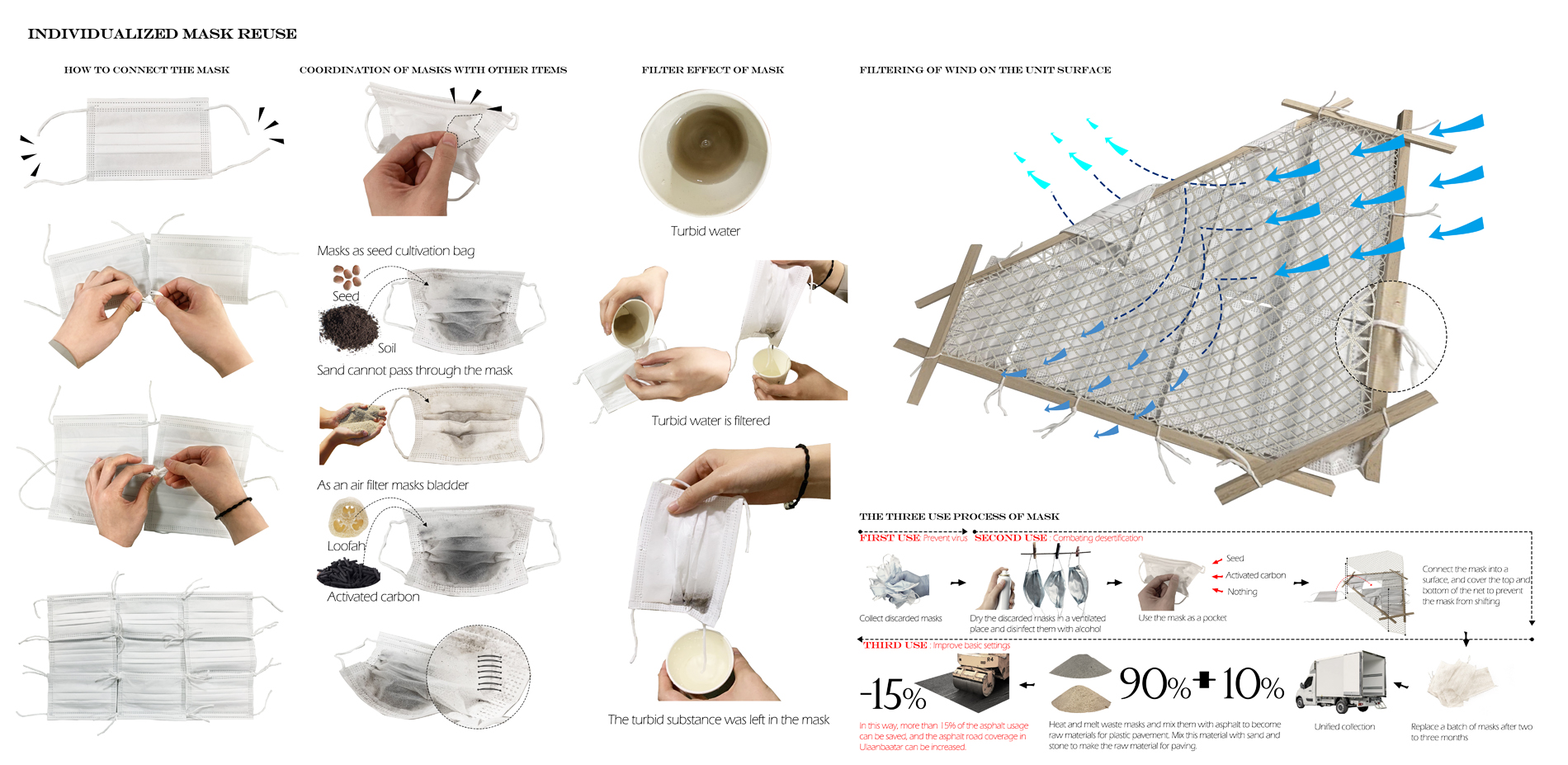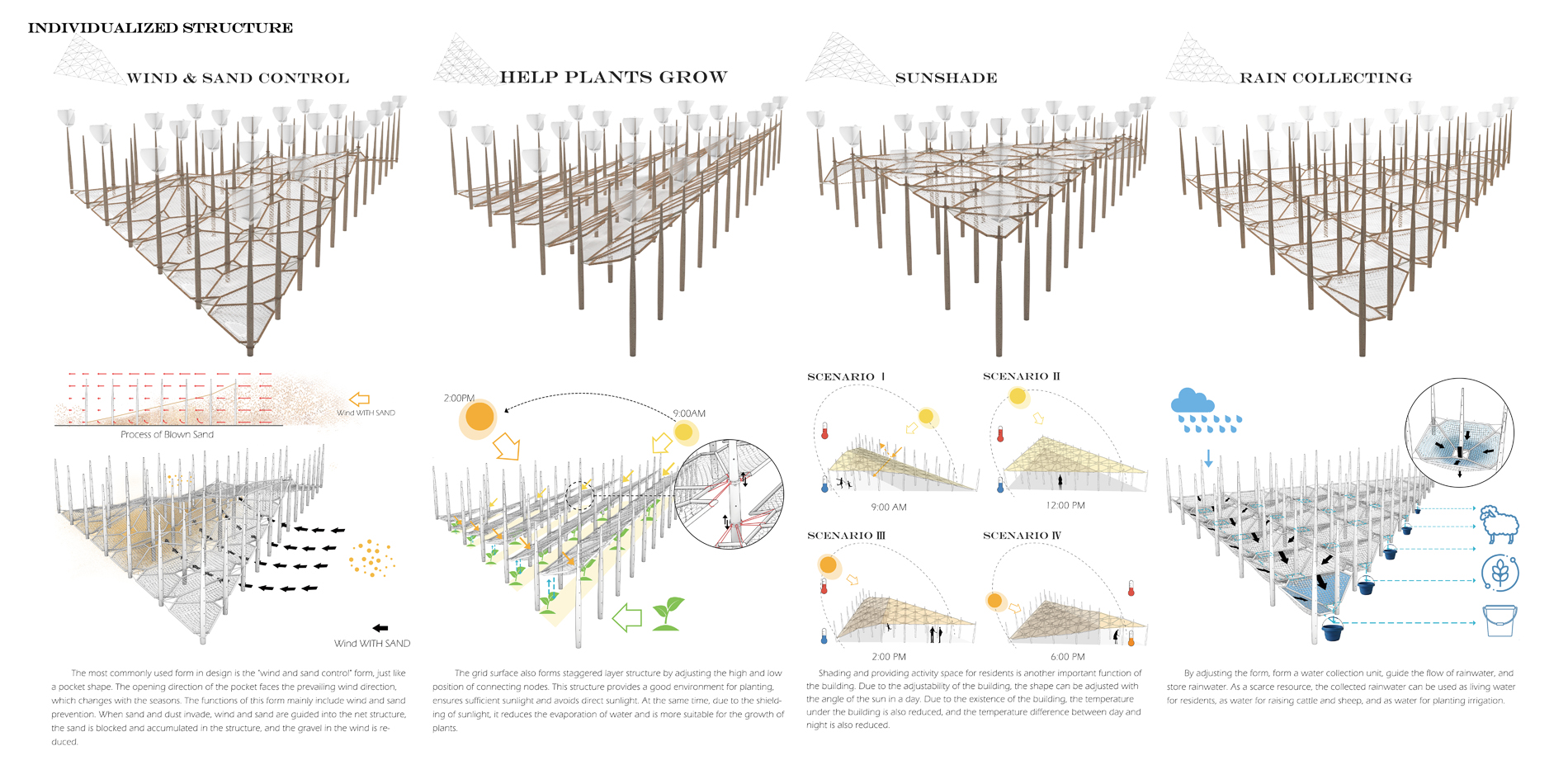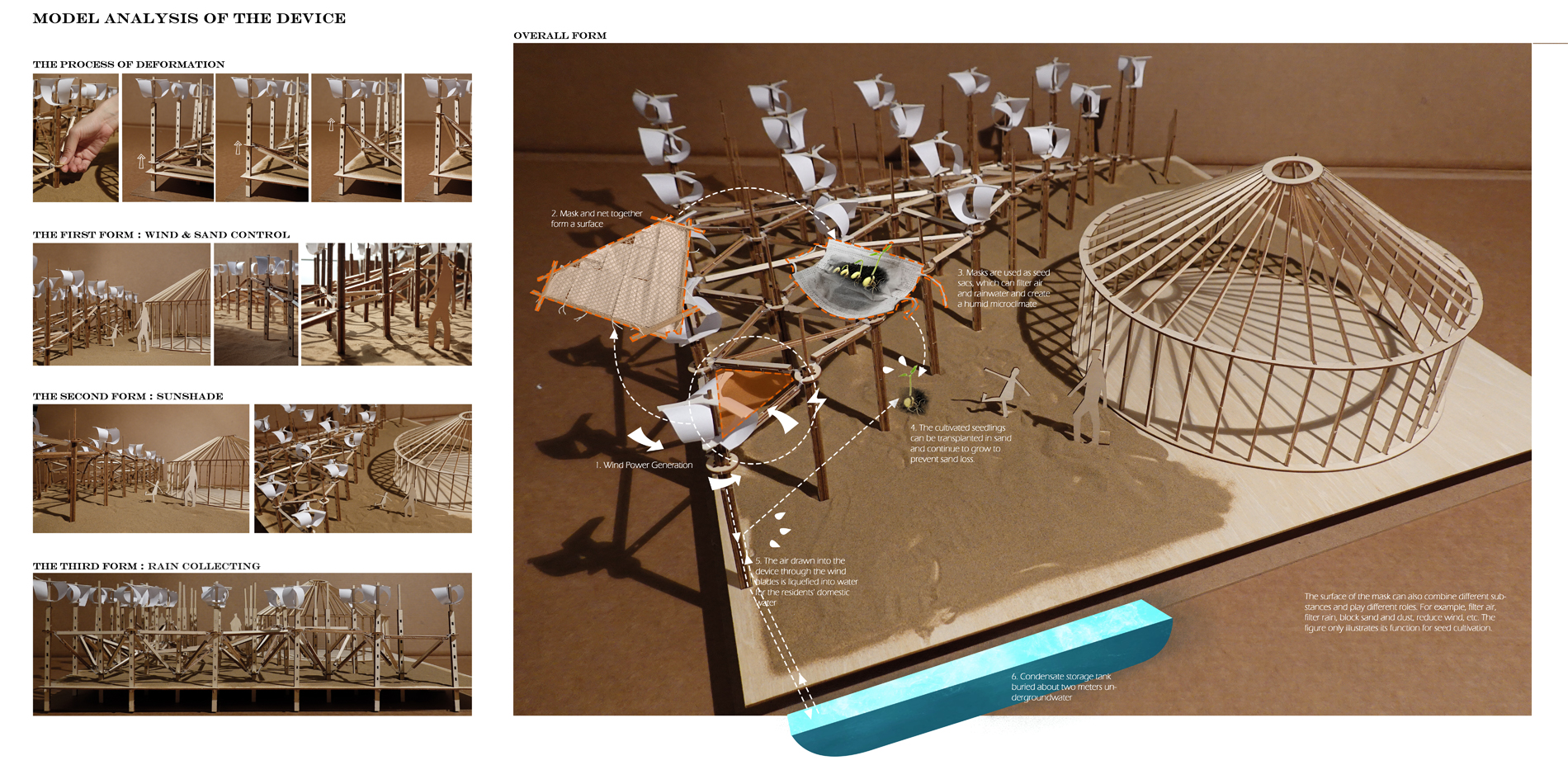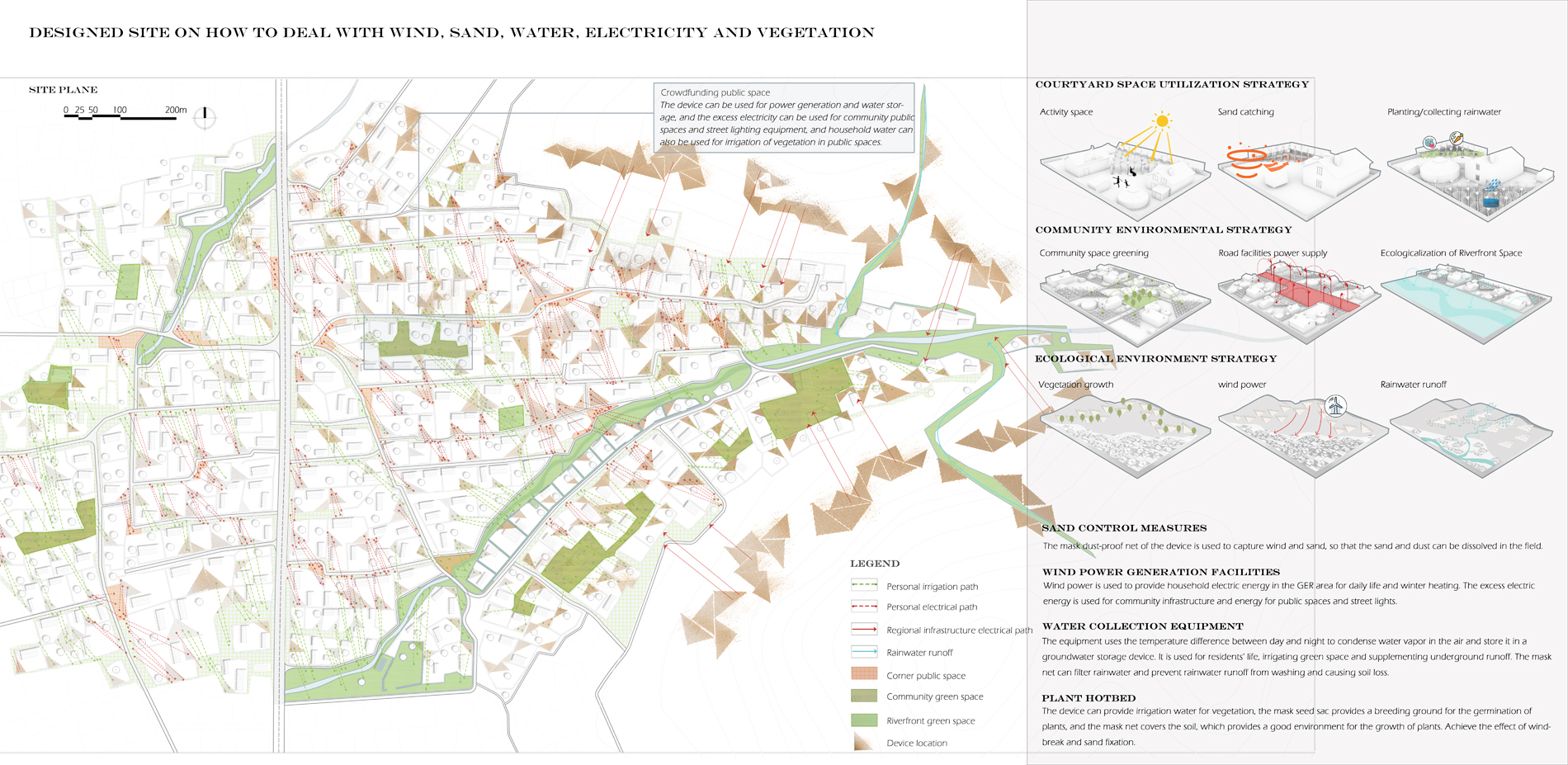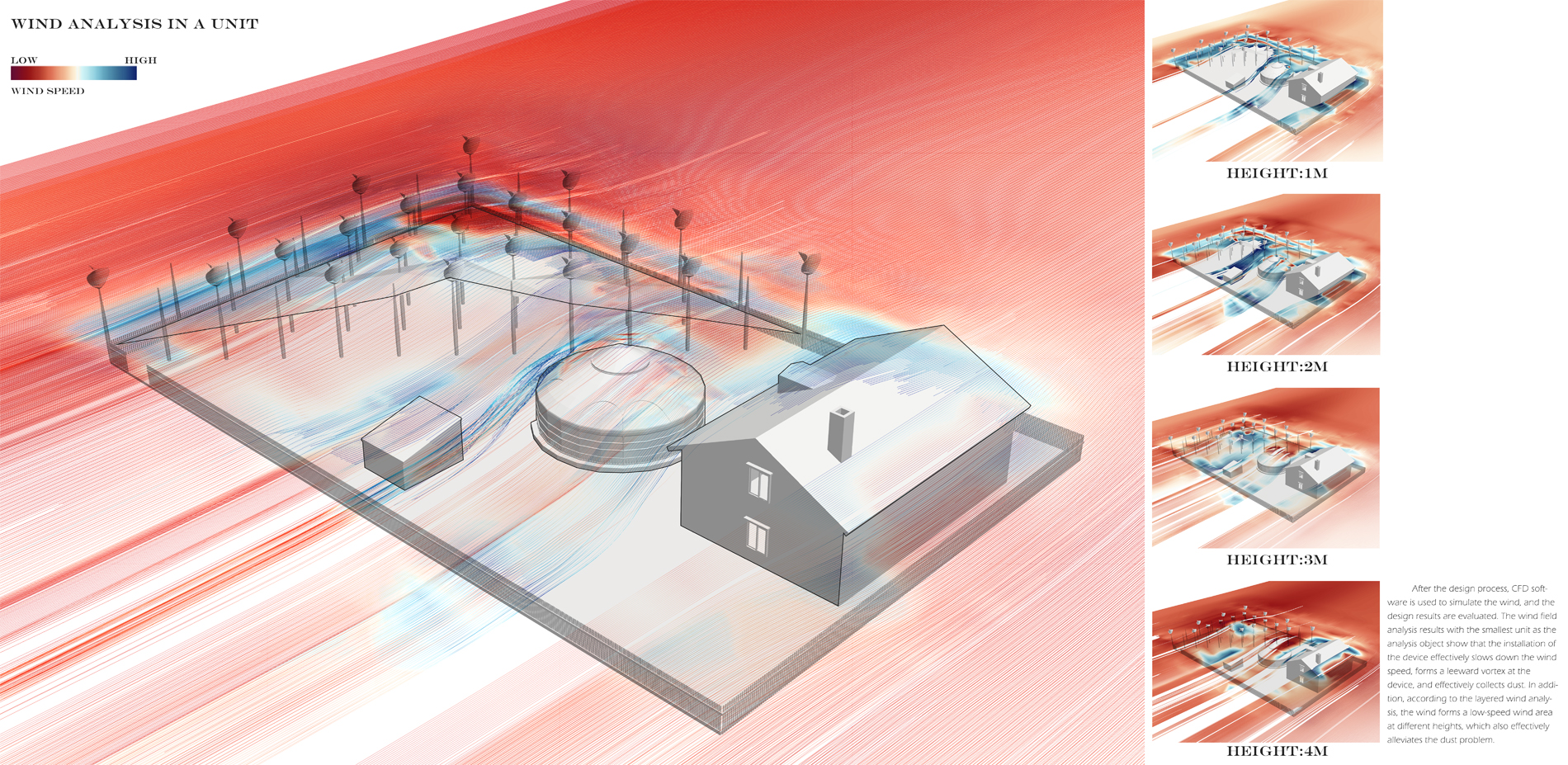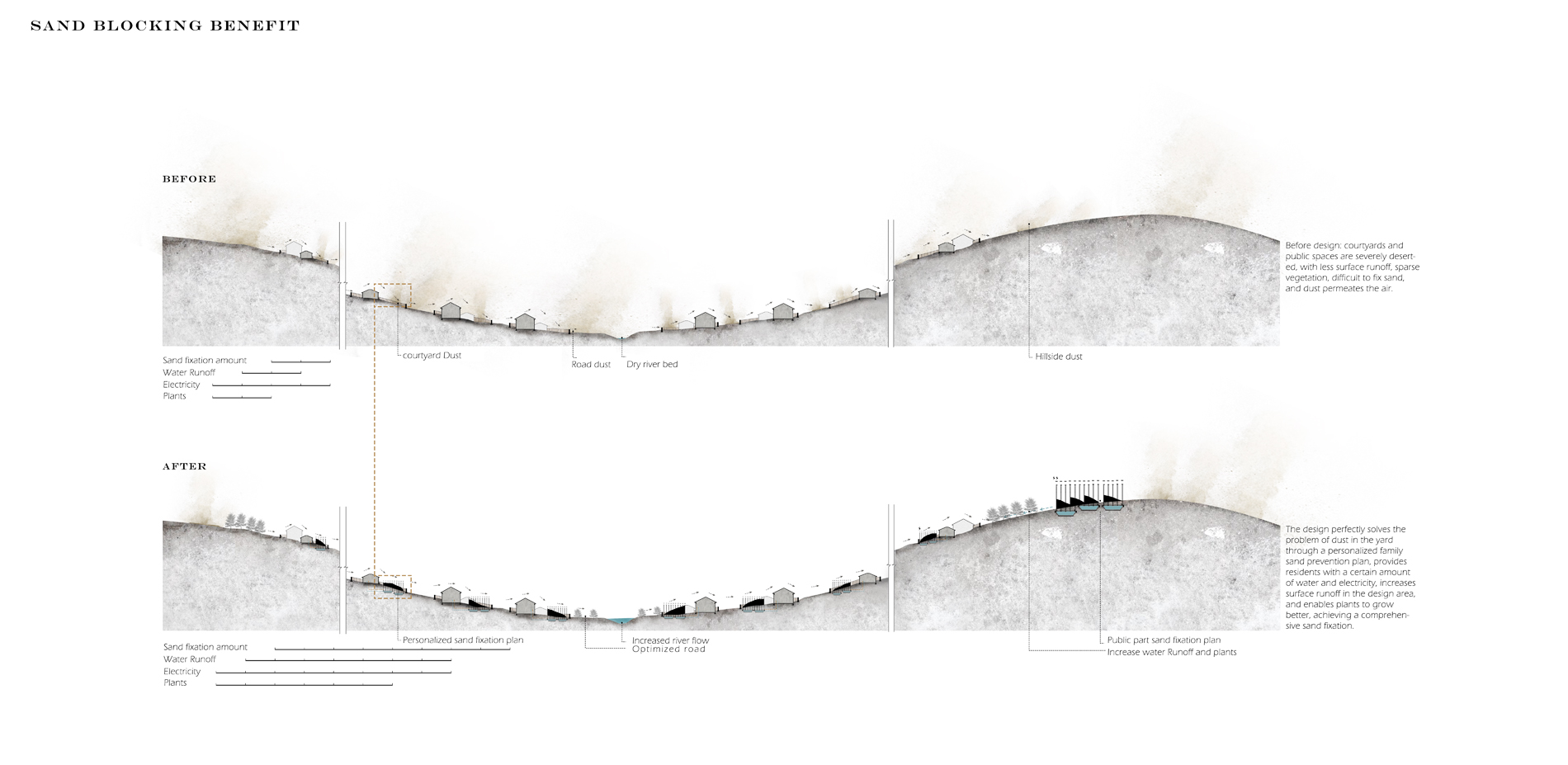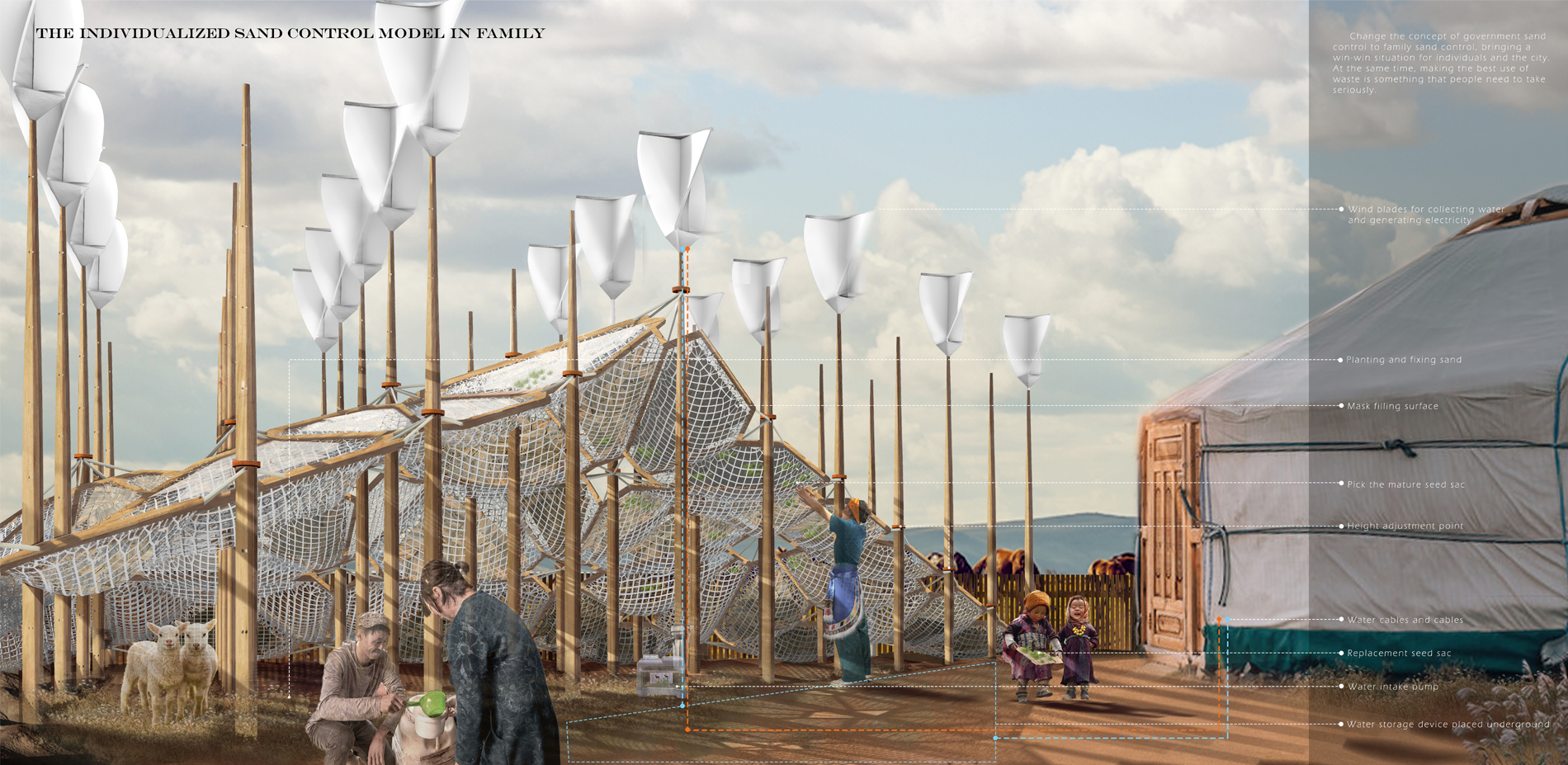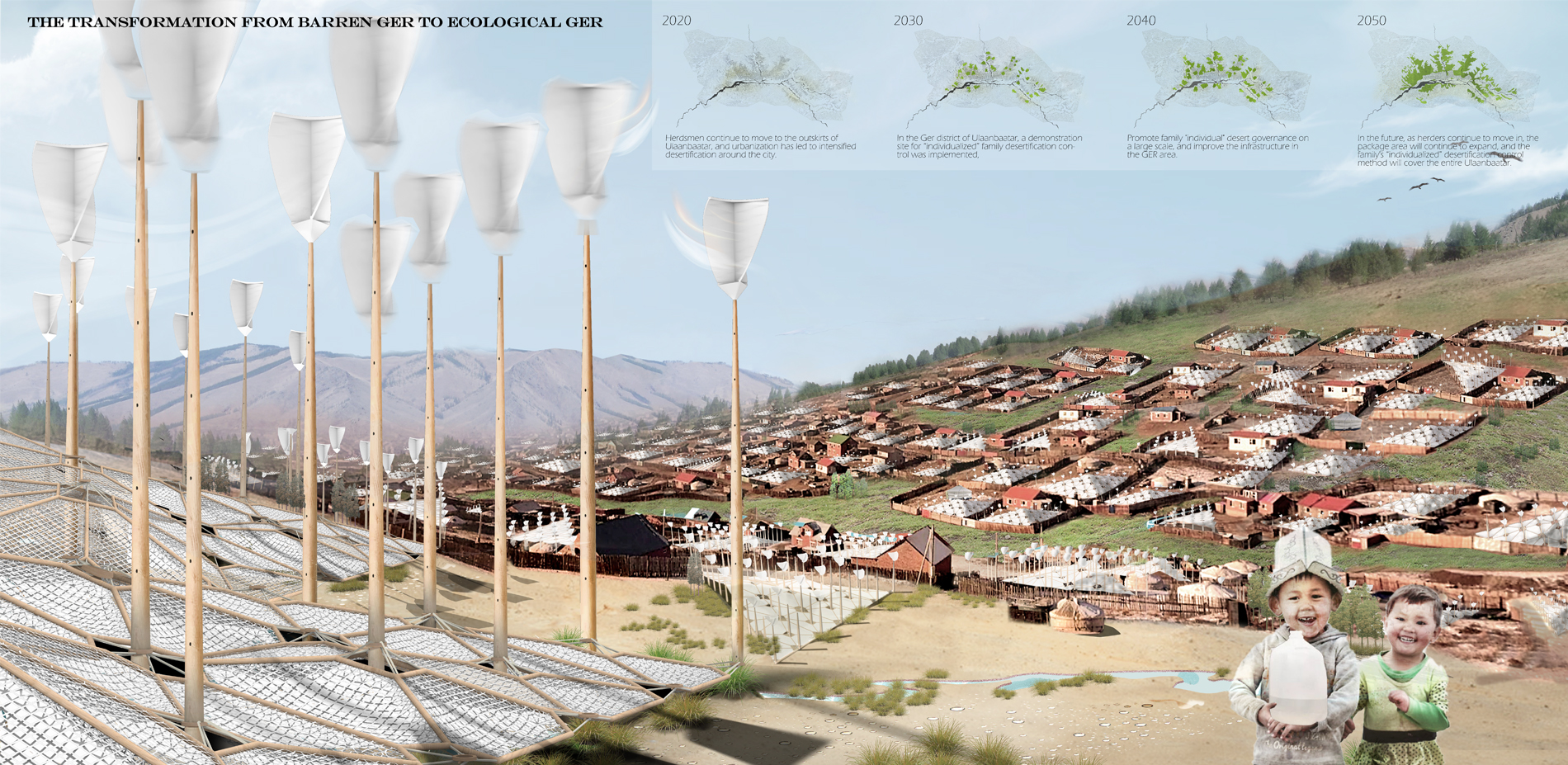The Interaction Between Masks and Desertification: A Paradigm of Family Sand Control by Mongolian Herdsmen
Honor Award
General Design
Ulaanbaatar, Mongolia
Xi Zhao; Xue Li; Xinyu Yang; Qiong Wang, Student International ASLA; Lu Chen
Faculty Advisors: Zheng Li; Linhao Cai; Wei Duan; Xiangrong Wang; Liang Li; Yun Qian
Beijing Forestry University
A lot has been said about changing our cultural practices around COVID-19, but not a lot has been said about dealing with the materiality of a pandemic and single-use objects. This group proposes reusing masks for ecological and spatial uses—in this case, to combat desertification in Ulaanbaatar. The students clearly had fun experimenting with masks for water and electricity through modeling, and the results are clever and unique.
- 2021 Awards Jury
Project Statement
Our design location is Ger in Ulaanbaatar. A large number of herders gathered around Ulaanbaatar, which intensified the desertification of the city and caused socio-economic, health and environmental problems. In 2019, the COVID-19 epidemic raged, and a large number of discarded masks caused serious pollution. We explore ways to apply discarded masks to desertification control. The three parts of personalized water and electricity supply, personalized mask reuse, and personalized change structure constitute the family sand control plan. It is hoped that through this design, Mongolia’s “government control of desertification” will be transformed into “family control of desertification”. At the same time, by tapping the performance of masks, we call on the society to make full use of items instead of blindly discarding them.
Project Narrative
Background and vision: In recent years, extreme dust storms have occurred frequently in Mongolia, causing serious loss of life and property, and having a huge impact on neighboring countries such as China, Japan, South Korea, and North Korea. In 1900, Mongolia promoted a neo-liberal economy and herders could settle freely. Ulaanbaatar provided 0.07 hectares of resettlement land for herdsmen. Subsequently, the socialist collective economy was disintegrated, and the privatization policy promoted the urbanization of herders. The privatization policy of animal husbandry led to overgrazing, and herders’ resistance to natural disasters such as desertification of pastures and snow disasters was reduced. Going to the city to seek job opportunities, and forming a settlement area for herdsmen-Ger district around Ulaanbaatar. Almost half of Ulaanbaatar citizens live in Ger district. The settlement of herders intensified the desertification of the site, and the deterioration of the Mongolian environment in turn prompted a large number of herders to move to Ulaanbaatar, forming a vicious circle. In 2019, the COVID-19 epidemic raged around the world, causing a historic blow to humans. Tens of billions of disposable surgical masks were produced and put into use and were discarded. The randomly discarded masks pose a serious threat to the lives of animals in the natural environment. .
Can Mongolia’s desertification and mask waste have a positive interaction?
Family Sand Control: The Ger district is an urban settlement with nomadic characteristics. It is not restricted by the terrain. It is a large-scale gathering area composed of fenced courtyards. The infrastructure in this area is very poor. Residents cannot get guaranteed electricity and water. Coal-fired heating has caused serious air pollution. Excessive use of groundwater resources has led to a continuous decline in water levels and aggravated desertification around the city. All these have exacerbated the gap between the rich and the poor in the Ger district and the urban area of Ulaanbaatar. It is imperative to prevent desertification. Under sand control, every family has its own different needs and lifestyles. We are trying to use families in the Ger district as a unit to transform the “government control of sands” into “family control of sands”. Seek a personalized desert control plan. While combating desertification, it also eases social and economic contradictions.
Three personalized sand control methods: The first type: personalization of water and electricity Ulaanbaatar's excellent wind energy resources are used to generate electricity, the airflow generated by the rotation of the blades is drawn into the equipment, and the gaseous water in the air is liquefied into liquid water by using the temperature difference. Naturally, sand has excellent thermal insulation properties, combined with the excellent thermal conductivity of metals, so that the inner wall of the underground water storage equipment maintains a large temperature difference with the ground for a long time, and the flowing air can be continuously liquefied into water droplets. In summer, it is a concentrated period of water storage, and in winter, the underground can also maintain a higher temperature, and the water does not need to freeze. Electricity generated by wind energy can reduce household demand for coal and improve air quality. The water produced by the equipment can reduce the consumption of groundwater and slow down the desertification process from the root cause.
The second type: personalization of mask reuse Masks can have three opportunities to use, the first is to prevent disease; the second is to control sand; the third is to build roads. We have analyzed and tested the performance of masks. First, masks have good filtering performance, including filtering rainwater, filtering air, and filtering sand and dust. Second, it can be connected to form a surface to block wind and sand. Third, it can perform different functions by filling it with different substances. For example, filling loofah, activated carbon, etc. can purify the air; filling plant seeds can be used as a small cultivation sac to create a clean and humid environment for plants. According to the different needs of the family, the mask can play different functions. The masks after use are recycled by the government and mixed with asphalt to repair urban roads.
The third type: the personalization of the structure The variable structure provides four basic forms for family sand control. The first form is used to catch sand; the second form is used for shading and provides space for rest; the third form is used to guide sunlight and promote plant growth ; The fourth form is used to collect and filter rainwater. According to the habits of the family, the device can also be created in different forms.
Conclusion: Taking the reuse of discarded masks as an entry point, combining with the special family settlements in the ger area, starting from the actual production and life of the herdsmen, designing three personalized sand control methods to form a family sand control device, leaving the blowing sand inside the site. The products of the installation (water, electricity, plants, etc.) can not only meet the needs of basic household units, but also promote the development of community public spaces through crowdfunding. The desertification control scope of the entire region will expand with the expansion of the GER area. To promote the ecological restoration of the entire region of Ulaanbaatar, the continuous migration of herders and the anti-desertification form a virtuous circle.
Discussion: We want to explore how we can transform one problem into another solution, look at the environmental problems encountered in today’s world dialectically, break the barriers of traditional design thinking, and turn problems into opportunities. We may see a brand new world.
Plant List:
- Salix rosmarinifolia
- Potentilla fruticosa
- Pulsatilla turczaninovii
- Clematis hexapetala
- Polygonum angustifolium
- Thalictrum squarrosum
- Potentillabetonicaefolia
- Vicia amoena
- Aster alpinus
- Hordeum brevisubulatum
- Pugionium cornutum
- Stilpnolepis intricatum
- Pinus sylvestris var. mongolica Litv.
- Carrot
- Potato
- Tomato
- Cabbage
- Kale
- Muskmelon
- Curry Plant
